by Eric Meier
When attempting to identify a wood sample, it’s important to keep in mind the limitations and obstacles that are present in our task. Before starting, please have a look at The Truth Behind Wood Identification to approach the task in a proper mindset; I consider the linked article to be required reading for all those visiting my site with the intent of identifying wood.
1. Confirm it is actually solid wood.
Before proceeding too much farther into the remaining steps, it’s first necessary to confirm that the material in question is actually a solid piece of wood, and not a man-made composite or piece of plastic made to imitate wood.
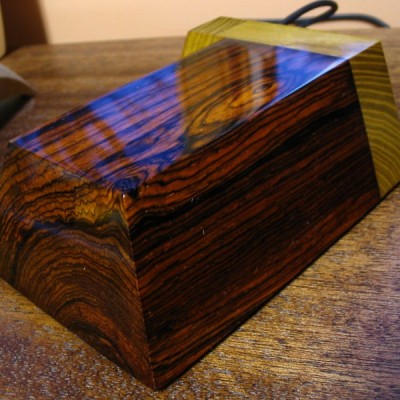
Can you see the end-grain?
Manufactured wood such as MDF, OSB, and particleboard all have a distinct look that is—in nearly all cases—easily distinguishable from the endgrain of real wood. Look for growth rings—formed by the yearly growth of a tree—which will be a dead-giveaway that the wood sample in question is a solid, genuine chunk of wood taken from a tree.
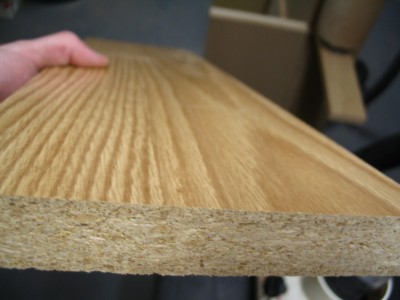
Is it veneered?
If you see a large panel that has a repeating grain pattern, it may be a veneer. In such cases, a very thin layer of real wood is peeled from a tree and attached to a substrate; sometimes the veneer can be one continuous repeating piece because it is rotary-sliced to shave off the veneer layer as the tree trunk is spun by machines. Assuming it is a real wood veneer with a distinct grain and texture—and not merely a piece of printed plastic—you may still be able to identify the outer veneer wood in question, but you should still realize that is it only a veneer and not a solid piece of wood.
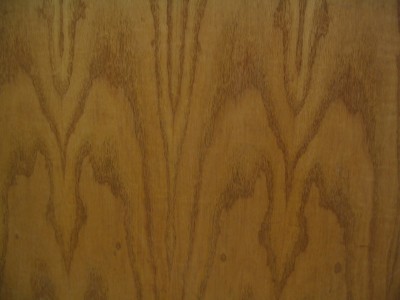
Is it painted or printed to look like wood?
Many times, especially on medium to large-sized flat panels for furniture, a piece of particleboard or MDF is either laminated with a piece of wood-colored plastic, or simply painted to look like wood grain. Many of today’s interior hardwood flooring planks are good examples of these pseudo-wood products: they are essentially a man-made material made of sawdust, glues, resins, and durable plastics.
2. Look at the color.
Some questions to immediately ask yourself:
Is the color of the wood natural, or is it stained?
If there is even a chance that the color isn’t natural, the odds are increased that the entire effort of identifying the wood will be in vain.
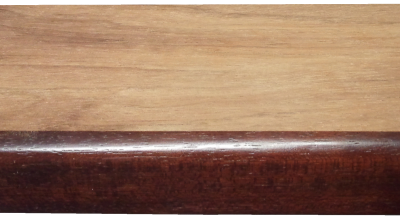
Is it weathered or have a patina?
Many woods, when left outside in the elements, tend to turn a bland gray color. Also, even interior wood also takes on a patina as it ages: some woods get darker, or redder, and some even get lighter or lose their color; but for the most part, wood tends to darken with age.
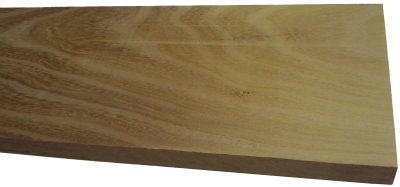
Is it possible to sand or plane the board to see the natural raw color of the wood?
The most predictable baseline to use when identifying wood is in a freshly sanded state. This eliminates the chances of a stain or natural aging skewing the color diagnosis of the wood.
3. Observe the wood grain.
If the wood is unfinished, then look at the texture of the grain. Ask yourself these questions:
Does the wood have an open, porous texture?
Most softwoods will be almost perfectly smooth with no grain indentations, while many common hardwoods have an open pore structure, such as oak or mahogany; though there are some hardwoods that are also smooth to the touch, such as maple.
Can you tell if the wood is quartersawn or plainsawn?
By observing the grain patterns, many times you can tell how the board was cut from the tree. Some wood species have dramatically different grain patterns from plainsawn to quartersawn surfaces. For instance, on their quartersawn surfaces, lacewood has large lace patterns, oak has flecks, and maple has the characteristic “butcher block” appearance.
Is there any figure or unusual characteristics, such as sapwood, curly or wild grain, burl/knots, etc.?
Some species of wood have figure that is much more common than in other species: for example, curly figure is fairly common in soft maple, and the curls are usually well-pronounced and close together. Yet when birch or cherry has a curly grain, it is more often much less pronounced, and the curls are spaced farther apart.
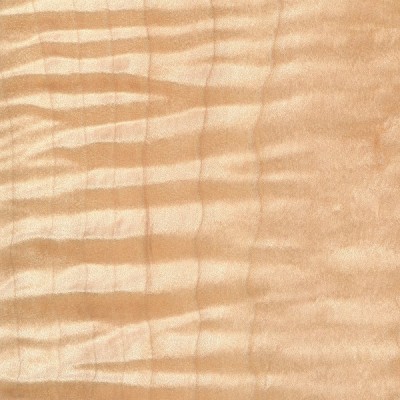
4. Consider the weight and hardness of the wood.
If it’s possible, pick the piece of wood up and get a sense of its weight, and compare it to other known wood species. Try gouging the edge with your fingernail to get a sense of its hardness. If you have a scale, you can take measurements of the length, width, and thickness of the wood, and combine them to find the density of the wood. This can be helpful to compare to other density readings found in the database. When examining the wood in question, compare it to other known wood species, and ask yourself these questions:
Is the wood dry?
Wood from freshly felled trees, or wood that has been stored in an extremely humid environment will have very high moisture contents. In some freshly sawn pieces, moisture could account for over half of the wood’s total weight! Likewise, wood that has been stored in extremely dry conditions of less than 25% relative humidity will most likely feel lighter than average.
How does the wood’s weight compare to other species?
Taking into account the size of the board, how does its weight compare to other benchmark woods? Is it heavier than oak? Is it lighter than pine? Look at the weight numbers for a few wood species that are close to yours, and get a ballpark estimate of its weight.
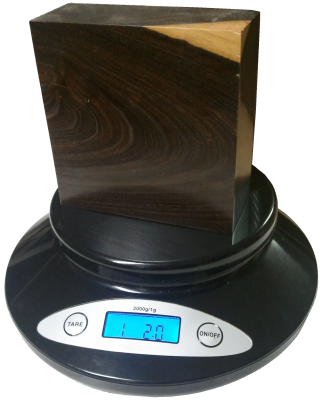
How hard is the wood?
Obviously softwoods will tend to be softer than hardwoods, but try to get a sense of how it compares to other known woods. Density and hardness are closely related, so if the wood is heavy, it will most likely be hard too. If the wood is a part of a finished item that you can’t adequately weigh, you might be able to test the hardness by gouging it in an inconspicuous area. Also, if it is used in a piece of furniture, such as a tabletop, a general idea of its hardness can be assessed by the number and depth of the gouges/dings in the piece given its age and use. A tabletop made of pine will have much deeper dents than a tabletop made of Oak. Additionally, you can always try the “fingernail test” as a rough hardness indicator: find a crisp edge of the wood, and with your fingernail try to push in as hard as you can and see if you’re able to make a dent in the wood.
5. Consider its history.
Many times we forget common sense and logic when attempting to identify wood. If you’ve got a piece of Amish furniture from Pennsylvania, chances are more likely that the wood will be made of something like black walnut or cherry, and not African wenge or jatoba. You might call it “wood profiling,” but sometimes it can pay to be a little prejudiced when it comes to wood identification. Some common-sense questions to ask yourself when trying to identify a piece of wood:
Where did it come from?
Knowing as much as you can about the source of the wood—even the smallest details—can be helpful. If the wood came from a wood pile or a lumber mill where all the pieces were from trees processed locally, then the potential species are immediately limited. If the wood came from a builder of antique furniture, or a boat-builder, or a trim carpenter: each of these occupations will tend to use certain species of woods much more often than others, making a logical guess much simpler.
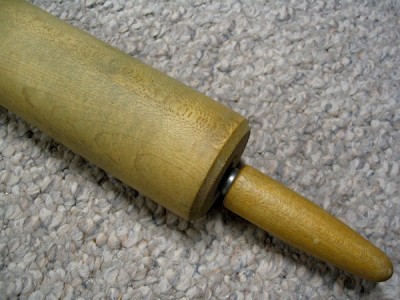
How old is it?
As with the wood’s source, its age will also help in identification purposes. Not only will it help to determine if the wood should have developed a natural patina, but it will also suggest certain species which were more prevalent at different times in history. For instance, many acoustic guitars made before the 1990s have featured Brazilian rosewood backs/sides, yet due to CITES restrictions placed upon that species, East Indian rosewood became a much more common species on newer guitars. (And this is a continuing shift as newer replacements are sought for rosewoods altogether.)
How large is the piece of wood?
Some species of trees are typically very small—some are even considered shrubs—while others get quite large. For instance, if you see a large panel or section of wood that’s entirely black, chances are it’s either painted, dyed, or stained: Gaboon ebony and related species are typically very small and very expensive.
What is the wood’s intended use?
Simply knowing what the wood was intended for—when considered in conjunction with where it came from and how old it is—can give you many clues to help identify it. In some applications, certain wood species are used much more frequently than others, so that you can make an educated guess as to the species of the wood based upon the application where it was used. For instance, in the United States: many older houses with solid hardwood floors have commonly used either red oak or hard maple; many antique furniture pieces have featured quartersawn white oak; many violins have spruce tops; many closet items used aromatic red cedar, and so forth. While it’s not a 100% guarantee, “profiling” the wood in question will help reduce the number of possible suspects, and aid in deducing the correct species.
6. Find the X-Factor.
Sometimes, after all the normal characteristics of a sample have been considered, the identity of the wood in question is still not apparent. In these instances—particularly in situations where a sample has been narrowed down to only a few possible remaining choices—it’s sometimes helpful to bring in specialized tests and other narrower means of identification.
The following techniques and recommendations don’t necessarily have a wide application in initially sorting out wood species and eliminating large swaths of wood species, but will most likely be of use only as a final step in special identification circumstances.
Odor
Believe it or not, freshly machined wood can have a very identifiable scent. When your eyes and hands can’t quite get a definitive answer, sometimes your nose can. Assuming there is no stain, finish, or preservative on or in the wood, quickly sand, saw, or otherwise machine a section of the wood in question, and take a whiff of the aroma.
Although new scents can be very difficult to express in words, many times the scent of an unknown wood may be similar to other known scents. For instance, rosewoods (Dalbergia spp.) are so named for their characteristic odor that is reminiscent of roses. Although difficult to directly communicate, with enough firsthand experience scents can become a memorable and powerful means of wood identification.
Fluorescence
While certain woods can appear basically identical to one another under normal lighting conditions, when exposed to certain wavelengths—such as those found in blacklights—the wood will absorb and emit light in a different (visible) wavelength. This phenomenon is known as fluorescence, and certain woods can be distinguished by the presence or absence of their fluorescent qualities. See the article Fluorescence: A Secret Weapon in Wood Identification for more information.
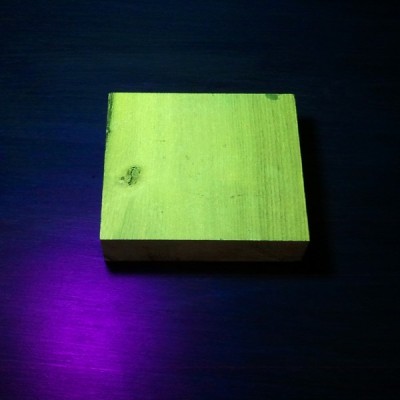
Chemical Testing
There are only a small number of chemical tests regularly used on wood, most of which are very specialized and were developed to help distinguish easily confused species with one another. They work by detecting differences in the composition of heartwood extractives. A chemical substance (called a reagent) is usually dissolved in water and applied to the wood surface: the surface is then observed for any type of chemical reaction (and accompanying color change) that may occur. Two of the most useful are the tests that are meant to separate Red and White Oak, and Red and Hard Maple.
Heartwood Extractives Leachability
Sometimes a wood species will have heartwood extractives that will be readily leachable in water and capable of conspicuously tinting a solution of water a specific color. For instance, the heartwood extractives contained in osage orange (Maclura pomifera) contain a yellowish-brown dye that is soluble in water. (This can sometimes be observed anecdotally when the wood is glued with a water-based adhesive: the glue’s squeeze-out is an unusually vibrant yellow.)
In a simple water extract color test, wood shavings are mixed with water in a vial, test tube, or other suitably small container, and the color of the water is observed after a few minutes. If the heartwood extractives are leachable by water, then a corresponding color change should quickly occur.
In addition to osage orange (Maclura pomifera), merbau (Intsia spp.), and rengas (Gluta spp. and Melanorrhoea spp.) are also noted for their readily leachable heartwood extractives. Because this property is quite uncommon, it can serve to quickly differentiate these woods from other lookalikes.
7. Look at the endgrain.
Perhaps no other technique for accurate identification of wood is as helpful and conclusive as the magnified examination of the endgrain. Frequently, it brings the identification process from a mostly intuitive, unscientific process into a predictable, repeatable, and reliable procedure.
Looking at the endgrain with a magnifier shouldn’t be a mystifying or esoteric art. In many cases, it’s nearly as simple as examining small newsprint under a magnifying glass. There are three components necessary to reap the full benefits contained in the endgrain:
I. A prepared surface.
When working with wood in most capacities, it becomes quickly apparent that endgrain surfaces are not nearly as cooperative or as easily worked as face grain surfaces. However, in this case, it is absolutely critical that a clear and refined endgrain surface is obtained.
For a quick glance of a softwood sample, a very sharp knife or razor blade can be used to take a fresh slice from the endgrain. However, in many denser species, especially in tropical hardwoods, one of the best ways to obtain a clear endgrain view is through diligent sanding. It’s usually best to begin with a relatively smooth saw cut (as from a fine-toothed miter saw blade) and proceed through the grits, starting at around 100, and working up to at least 220 or 320 grit, preferably higher for the cleanest view.
II. The right magnifier.
It need not be expensive, but whatever tool is used to view the endgrain should have adequate magnifying power. In most instances, 10x magnification is ideal, however, anything within the range of 8 to 15x magnification should be suitable for endgrain viewing. (Standard magnifying glasses are typically in the range of 2 to 4x magnification.)
These stronger magnifiers, sometimes called loupes, usually have a smaller viewing area than standard magnifying glasses. Fancier models—with built in lights, or larger viewing surfaces—are available at a premium; but the most basic models are usually only a few dollars.
III. A trained eye.
The third element that constitutes a proper endgrain examination is simply knowing what to look for. In analyzing the patterns, colors, shapes, and spacing of the various anatomical features, there is a veritable storehouse of information within the endgrain—all waiting to be unlocked. Yet, if these elements have not been pointed out and learned, the array of features will simply seem like an unintelligible jumble. The discipline of recognizing anatomical endgrain features is not easily summed up in a few sentences or even a few paragraphs, but it is nonetheless critical to the identification process. To this end, an in-depth look should be given to the various categories, divisions, and elements that constitute endgrain wood identification on the macroscopic level. (In this regard, macroscopic denotes what can be seen with a low-powered, 10x hand lens—without the aid of a microscope—rather than simply what can be seen with the naked eye.) Because the anatomy between softwoods and hardwoods is so divergent, each will be considered and examined separately:Still stumped?
If you have a mysterious piece of wood that you’d like identified, you’ve got a few options for next steps:USDA’s Forest Products Laboratory
You can mail your physical wood samples to the Center for Wood Anatomy Research.
Pros:
- Free
- Professional wood identification
Cons:
- Only available to US citizens
- Slow turnaround times (up to a month or more)
- Limited to three IDs per year
See their Wood ID Factsheet for more info.
Alden Identification Service
You can mail your physical wood samples (even small sections taken from antiques) to Alden Identification Service.
Pros:
- Professional wood identification
- Faster turnaround times (ranging from a few days to a week or two)
Cons:
- Paid service
See their ordering page for more info. (Note that Harry Alden has written several books while at USDA, including both Hardwoods and Softwoods of North America.)
Ask for help online
If the wood ID is merely a curiosity, or non-critical, you can post pictures of the wood in question.
Pros:
- Free
- No need to send physical samples
Cons:
- Greatly limited by the quality of the pictures provided
- Extra work usually required to get adequate clarity in photos
See article of Common US Hardwoods to help find the most commonly used woods.
Get the hard copy
 If you’re interested in getting all that makes The Wood Database unique distilled into a single, real-world resource, there’s the book that’s based on the website—the Amazon.com best-seller, WOOD! Identifying and Using Hundreds of Woods Worldwide. It contains many of the most popular articles found on this website, as well as hundreds of wood profiles—laid out with the same clarity and convenience of the website—packaged in a shop-friendly hardcover book.
If you’re interested in getting all that makes The Wood Database unique distilled into a single, real-world resource, there’s the book that’s based on the website—the Amazon.com best-seller, WOOD! Identifying and Using Hundreds of Woods Worldwide. It contains many of the most popular articles found on this website, as well as hundreds of wood profiles—laid out with the same clarity and convenience of the website—packaged in a shop-friendly hardcover book. 





Why I will no longer be replying to every wood ID request I’ve replied to literally thousands of wood ID requests on this site over the past 13+ years, but as the site’s popularity has grown, so has the time demands for ID on a daily basis. (Contrary to what some may seem to think, I am not some all-knowing wood wizard that can instantly ID your wood. It can actually take me a long time to sift through a lot of different resources.) Over the past few years, my backlog of pending wood species to be added to the… Read more »
Hello! Could someone please see if they can identify what type of wood this is? One flooring expert believes it is Oak, just looking for a second/third opinion. I circled the plank size variation in the close up picture – Anthony
Looks like hard maple to me, assuming you are in the US. You can also see what appears to be a bit of a birdseye figure in the second picture in the bottom right. Better pictures would help others give a better ID in these situations. With that being said, I don’t really see how a flooring expert could think this flooring is oak given the provided pictures.
Hi Eric, I sanded a bit more to help you.
Thanks, I can see from the close spacing of the grain that it is an old growth softwood. Most likely a species of southern yellow pine, sometimes called antique or heart pine.
My lockdown project was to strip my stairs in my 80s ex-council house in London. Now, I’m desperate to know what the wood is on my stairs as I’d like to find something to match it for the floorboards throughout the house and on the landings.
I can’t tell from the pics, and I’m not sure what was commonly used in London. If it were in the US, I would say something like birch or maple, but that may not be standard for stairs in your location.
Hi Eric! Thank you for the great article! We just purchased a home and are trying to identify these floors. Any chance you can help? Thank you! :)
I can’t tell from those pictures, any chance you can get a closer pic of the wood grain? Also, are you located in the US?
Hi! I got this table second hand and it doesn’t have legs.. I’m trying to find ones that’ll match. Any idea what kind of wood this is? Thank you!!
Can’t tell from the pictures, but superficially the wood resembles a dark stained mahogany. I would think if you got some sort of mahogany and tried to find a matching stain, it should match the existing top well.
Hi,
Can you identify the wood type?
Several “professionals” have given conflicting opinions. //:0
//:0
An ID is only as good as the pictures provided. Unfortunately, I can’t tell from that picture. If you could get a closer shot of the raw wood grain, as well as a picture of the engrain (once it’s been cleaned up) I could probably get a better idea.
Thanks. I’ve attached a shot with a sanded and unsanded portion of floor. Unfortunately I don’t have an end grain sample.
Any idea what wood this is? I’m trying to strip banisters that were painted over the last 20 years and exposed this. Any help is appreciated.
Red oak
Pictures for below
Hi Eric,
Enjoying the website. Great resource. Struggling to identify these woods. Could you help? The boards are raw (they are the underside) but I’ve already put osmo top oil on the end grain. Hope that doesn’t make it harder. Any help appreciated.
The second one, with it’s noticeable rays, could be oak. Other than that, I can’t tell. Seems obscure.
Hi,
Would you be able to identify which wood this front door is made out of?
Thank you for your help!
Sarah
Looks like oak.
Hey Eric!
Hoping you can help me identify these floors that have been buried under carpet for many years. House was built in 1911.
I can’t tell, is it possible to sand through all top layers and get a picture of the bare wood grain?
Can you identify this wood floor?
Thanks
Red oak
Hi Eric,
Glad I found your website. Are you able to identify the type of wood this heavy desk is made out of? Thank you for your help and expertise.
Chris
Looks like oak
This is a piece of old barn wood with one side planed and worm holes exposed. Any idea what kind of wood?
Possibly chestnut? Would need to see clear endgrain pic to be sure.
Hello! What type of wood is this cabinet? It’s heavy. Top sanded bare some varnish on sides
Can’t tell form the pictures, sorry. It just looks like a very generic wood that’s been stain and artificially distressed for a certain look.
Hi Eric,
I was wondering if you could help me identify the type of wood in the picture? It’s on a mantel for a fireplace in a house built in the Midwest during the 1918s.
Thank You,
Chris
Picture is too blurry, sorry.
I made a picture frame using walnut and some wood a friend of mine gave me. I’m not sure what it is. I have attached a picture of it raw unfinished and finished with oil.
Looks pretty unique to me, doesn’t resemble any common US hardwood that I can tell. Looks like a diffuse porous tropical hardwood, which can be very tough to ID.
wood types for the table and chairs if you wouldn’t mind (ill post the table if it didn’t upload next) Thank you so much!
Possibly beech? It’s really hard to tell from the picture, maybe better lighting for next pictures?
Thanks for creating such an informative site to share extensive free knowledge!
Definitely saving this valuable resource but I’ll be busy a while employing the various tests and techniques.
P.S. What’s this wood?
….Kidding! I’ll be back to tell YOU! ;)
Hi Eric,
What wood is this from G Plan 30 year old cupboard?
Thanks
JB
I can’t tell from the picture, but it’s possibly a type of mahogany.
Thanks Eric,
greatly appreciated !!
thanks for the expert feedback.
best
Jon B
Hi Eric,
I am so glad I found your page. Could you please tell me what type of flooring this is?
I can’t tell from the picture. Can you get a closer shot of the grain?
Hi, I’m looking to give this coffee table a new lease of life. Two questions, can you tell me what type of wood it is and how can I cover the light spots. I intend to stain it.
If you want to stain it, you will have to strip off the old finish and then sand off at least some of the existing stain so that the new stain can be properly absorbed into the wood grain. Doing this should also take care of the light spots.
Can you tell me what sort of wood it is please.
Looks like red oak
Thanks.
Hi Eric, I found some wood in a house we were doing work on. Would you have any idea on what kind it might be?
Thanks
I can’t tell from the picture, a shot of the endgrain would be helpful. It appears to be a diffuse porous hardwood with a mahogany-like grain.
Hi Eric, we bought a secondhand table that we want to upcycle and add a matching bench with but aren’t sure what the top wood is made from any help would be appreciated thanks!
It looks like a softwood of some sort, such as pine.
Hello, we are trying to identify what type of wood this is, it is at least 70 years old but I know no more than that, are you able to help please…. thank you very much.
Looks like oak to me.
Thank you very much for your help, it’s a beautiful piece of furniture. Take care.
Hello, we have an old barn. We are trying to figure out what kind of wood we have. The barn is about 100 years old. Thank you, any info is greatly appreciated.
Hello! Our neighbor had a tree taken down and I snagged some of the wood for firewood/woodworking. It sat in our wood pile for a year before I cut into it to make some projects. However, the neighbor hasn’t been able to tell me what kind of wood it was, and I haven’t been able to get an ID on it. Any thoughts?
Trying to determine wood type in dining table. Roughly made in 1960’s or 1970’s.
Manufactured by Conant Ball Furniture Makers
Possibly a species of walnut in the Juglans genus. It looks a little unusual, but I can see the semi-ring-porous pattern in the face grain.
Hi Eric,
Thank you for your input.
I think it appears to be Walnut as well, but I am trying not to be swayed by the underlying stain color. Another person is trying to say it is Alder Wood.
Thanks
Does anyone know what kind of wood is in my old barn? Barn is over 100 years old. Thank you! .
Please get a closer picture of the wood grain, thanks
Hello, Eric! Can you help me identifying this piece? Is it a real solid wood? What kind is it?
Thank you!
It looks solid wood to me. I would need to see a clear, finely sanded close up of the endgrain in order to tell more info.
Hello, I have a vintage Baker coffee table from my Grandmother, but cannot figure out what type of wood it may be. It appears to be perhaps even more than one kind. Any help would be greatly appreciated!
I can’t tell from the pictures, sorry. It appears to be a veneered hardwood top, and the rim is different than the main body of the top.
Can you please tell me what kind of wood this is? This table is very heavy for its size. The sticker on it said made in India.
Thank you, David
Possibly monkeypod or a species of Albizia.
Thamk you. Just really pretty wood. Sanded it a little yesterday and put some wax on it. Really shines now and brought out the color and definition of the wood. Thank you again David
Hi Eric… I bought this small ,primitive, cupboard I want to refinish, but am nit sure of the wood type. This photo is the back, the rest is under layers of paint. Thank you for your help !
Looks like a type of softwood. Not sure on exact species. You should try to use a gel type stain to get an even coloration.
Thank you, Eric !
Hi Eric,
Trying to identify this table, either oak or pine?
Those appear to be two different woods. Neither oak nor pine. Both are hardwoods. The second pic resembles beech wood.
Just purchased a home and it has a built in entertainment center and bar made of the same wood not sure what kind it is. Could you please tell me what kind of would it could possibly be?
Cant tell from the picture, need to get a closer shot of the grain.
Trying to identify wood of crib. Any help would be appreciated. It is very heavy.
It’s a ring porous hardwood such as oak or ash. I can’t tell for sure from the pics, but my guess would be red oak.
I’m restoring a 1963 Holiday rambler travel trailer which has original birch plywood and the seams are covered with a trim that I can’t tell what species it is. The cabinet face frames and window sills seem to be made of the same wood. Here are some pictures of the small trim and larger window sill.
That looks like Honduran mahogany to me.
Awesome! Thanks for the response!
Hello! I need help to figure out the type of wood – I believe it is the same wood all over my house – It is the cabinets, built ins and trim board. Any help would be greatly appreciated. Thank you!!
Are you located in North America? It looks like cherry wood to me.
Hi Eric I bought these cabinets from government in South Africa any idea what type of wood it is
I can’t tell from the picture. Can you possibly get a image of the endgrain?
A few more photos to go with the ones below.
Cheers!
Hi Eric, I have a large dresser that I’m trying to find out the type of wood. Quite heavy, some wood texture you can still see in reflections of some of the photos. Stained dark, small patch inside a drawer shows original colour. A few more photos to come for other grain at the ends/front.
Thanks!
Corina
I’m stumped, sorry. With the stain, it is dewfinitely trying to look like mahogany, known I’m not sure that’s what it actually is. One possibility might be primavera.
Hi Eric, I have a table my wife and I acquired from her mother seventeen years ago out of Vermont. According to my wife it was one used during her childhood. It is in pieces at the moment and will need some repairs to restore and we’d like to identify the wood in order to do those repairs with the appropriate wood. Attached is an end grain photo from a part that attaches two table legs together. The wood is extremely light for a 20″x 3 “segment. Any help in identifying the wood is most appreciated.
Thomas, is it possible to finely sand this endgrain surface and post another picture, preferably in sunlight, or very well lit. As it stands right now, I can’t see enough detail to give even a tentative ID.
Her are a couple of more photos. The center where the holes are when the legs of the table attach to this cross member.
Sorry, the photos are still not clear enough. Ability to ID wood in this instance is limited by the clarity of the photos and ability to see anatomical features of the wood. Finely sanded and in direct sunlight can help with phone cameras.
These two photos are from opposite ends of the piece and are sanded with 220,400,600 grit. Also the wood has an old musty odor when sanding
Thanks those pictures are better. To me, it looks like a diffuse porous hardwood with small pores. There are a lot of suspects however, and it can be tough to figure out which is which. Some possibilities include: magnolia, buckeye, willow, poplar, aspen, and tupelo.
Sorry all views didn’t attach on my first attempt
Hi. A friend had this wood in his barn and didn’t know what it was. The photos attached are after planing. Can you identify?
Thank you for your help.
Mo
I can’t tell from those pics, sorry. Where are you located? How heavy is the wood? Can you get a picture of the endgrain?
Hi Eric,
We live in Western Pennsylvania. I am attaching additional photos including the edge and end cuts. When I apply mineral oil the darker wood gets very dark and the lighter part of the wood hardly changes as shown in the photo
It’s very hard to tell from the photos, but just judging by the greenish color in the first photo, my guess would be yellow poplar.
Hi Eric,
This is the original photos that I posted of my table. Thankyou very much.
Also wondering if you could comment on what type of price I could expect to fetch for such a table?
I appreciate the help.
James
Hi there Eric,
Thankyou for your last reply, I have had closer shots taken and I was wondering if you could clarify what type of wood from these, any further help would be appreciated greatly. Thankyou very much for your help.
James
It’s hard to say 100% for sure without seeing the endgrain, but upon closer inspection, it looks like a ring porous hardwood that’s been stained (pretty convincingly) to look like cherry. My first guess would be ash.
Hi there Eric,
Thankyou for your last reply, I have had closer shots taken and I was wondering if you could clarify any further from these, any further help would be appreciated greatly. Thankyou very much for your help.
James
Hi, can anybody help identify this ?
It doesn’t look immediately familiar as a common US hardwood. Where in the world are you located? Is it possible to get a closer picture of the wood grain?
I am in Australia it was brought at a thrift store
I can’t tell, sorry. Maybe someone from Australia can chime in with a guess.
Just found this fresh log lying by the train tracks. Anyone know what kind of tree it is?
I am trying to identify what type of Oak my dining room table would be? Any help would be much appreciated. Unfortunately these are the only images I have.
I can’t tell for sure from those pictures, but if I had to guess, it looks closest to cherry to me.